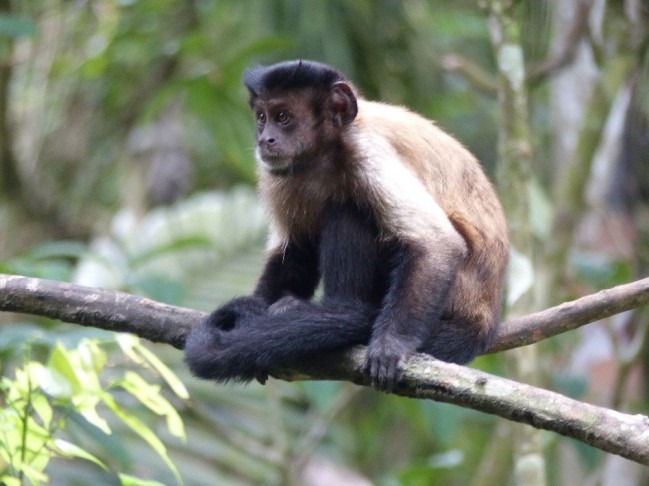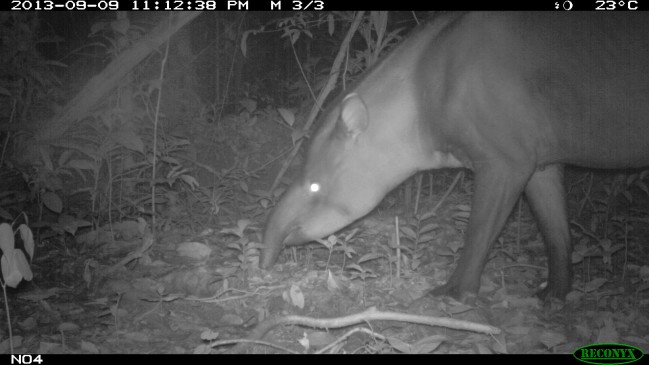Large wildlife monitoring
Studying big wildlife
The large terrestrial vertebrate fauna, omnipresent in the forest, is difficult to observe and therefore difficult to study. The contacts often include no more than some footprints on soft ground, the discovery of partly eaten fruits or seeds or traces of faeces. However, several studies and devices allow us to understand this discrete fauna and several protocols are in place to monitor the attendance of large terrestrial vertebrates in the reserve.
Kilometric abundance indices (IKA)
It is translated from the French indice kilométrique d’abondance. Such studies have been conducted for several years on a large part of French Guiana, providing data on the abundance and diversity of wildlife during a well-defined period and for a given site. It therefore allows comparison of the data in different geographic areas (with varying statuses of protection) but also to evaluate their fluctuations (after natural or human disturbance) if repeated over time.
The protocol is to wander one or more predefined paths at low speed and to note down all eye contact made for large mammals and some bird species especially sensitive to hunting pressure (Tinamous, Agamies and Galliformes). The operation is repeated for several days in order to have walked a hundred kilometers at the end of the monitoring. After the monitoring, the frequency of individuals met is related to the distance travelled. This is how an IKA is established for a certain species targeted by the protocol. It will be expressed in number of contacts or individuals per kilometre or per ten kilometres.
In Trésor the operation began in 2009. It is repeated every 2 years on two trails in the heart of the reserve that are situated in such a way that they cross the maximum number of different types of ecosystems (reliefs on flat forest, swamp forest, creek board). Past and current human disturbances in or around the protected territory have caused populations of big sized animals to be present in lower densities than on other control sites, even if diversity remains relatively high. It is noted that generally in the reserve, there is an absence of spider monkey (Ateles paniscus) and a very small number of recent contacts with curassow (Crax alector), two emblematic species that are extremely sensitive to human disturbance, including hunting and fragmentation of habitat.
Camera traps
Another way to study the discrete and timid species is the increasing use of camera traps. These devices allow one to view all the animals (especially cats, tapirs, peccaries and currasows) that pass a site during a period of time. It is equipped with an infrared flash. This process does not seem too upset animals and sometimes, out of curiosity, they even show some attraction to this strange accessory.
Camera traps are also particularly interesting for nocturnal wildlife, which is not considered in other studies such as IKAs. It is sometimes possible to observe previously unknown species of the study site and thereby clarifying their ecology. One of the most notable recent examples is the discovery of the crab-eating raccoon (Procyon cancrivorus) in the forest interior and the Guiana reliefs. It was thought to be strictly subservient to coastal mangroves and the banks of major rivers.
The team of the reserve recently acquired a series of pictures that has provided them with very interesting results on the (significantly underestimated) frequency of visits of the great Guianese fauna on its territory.



